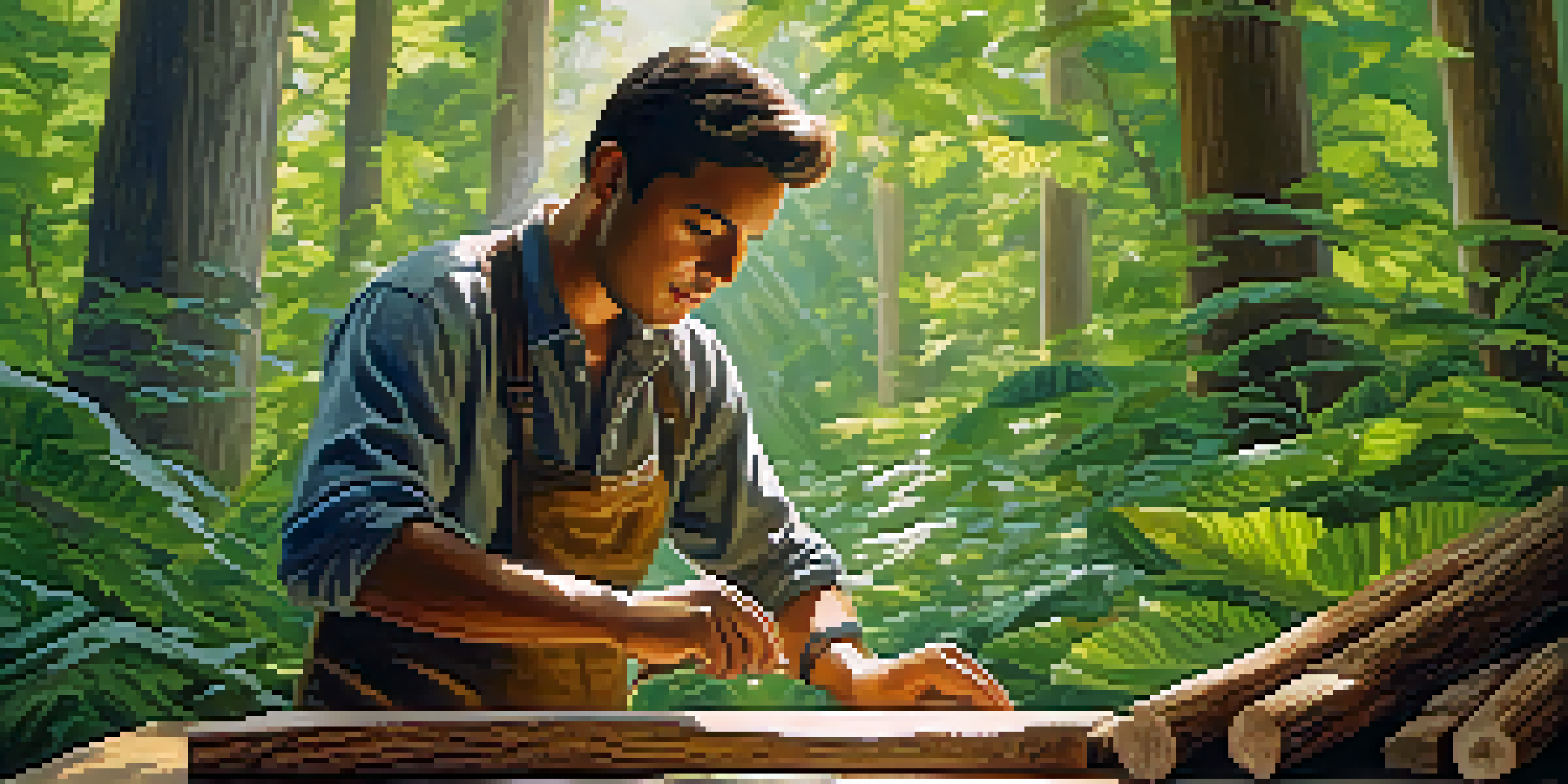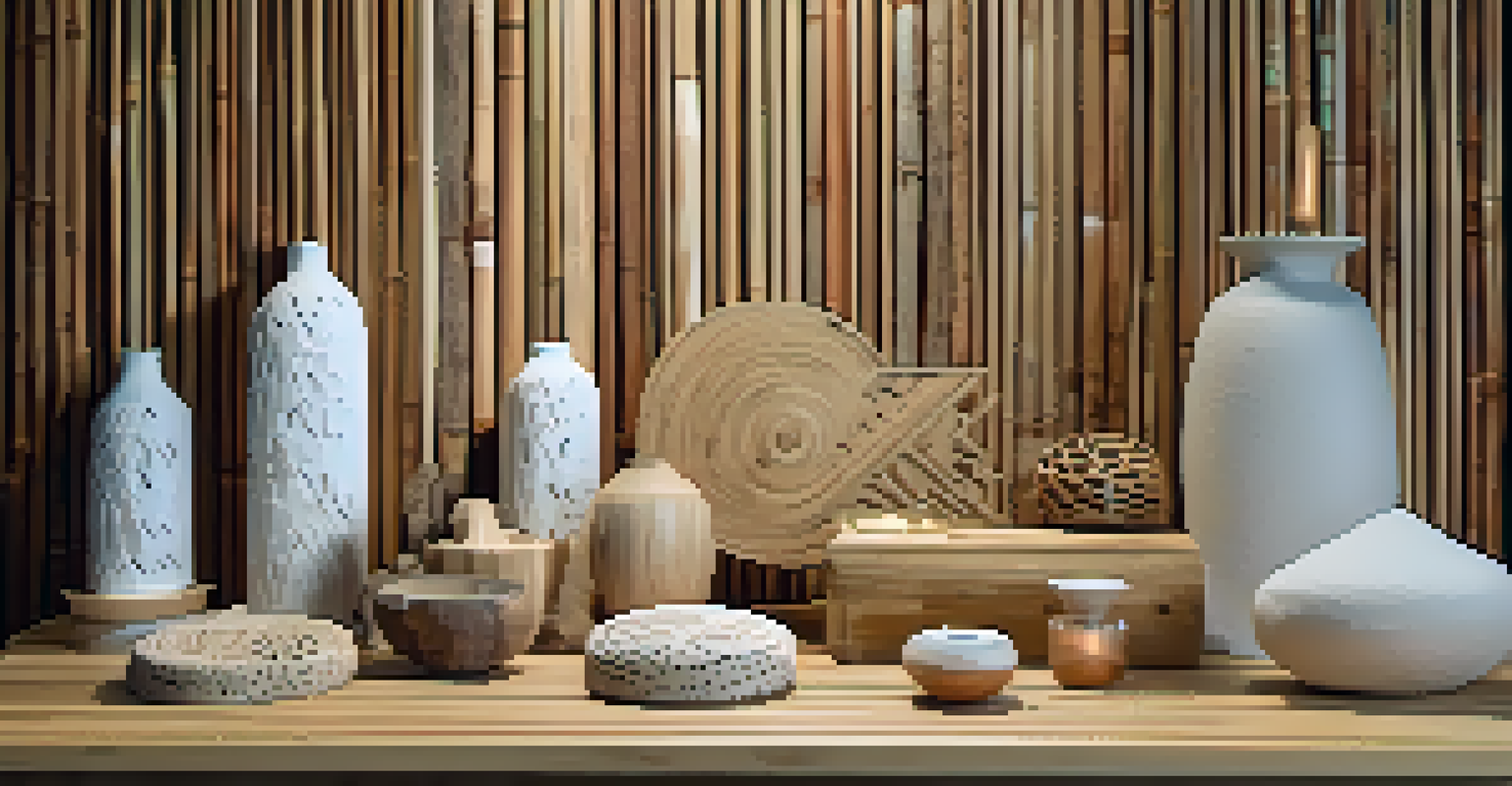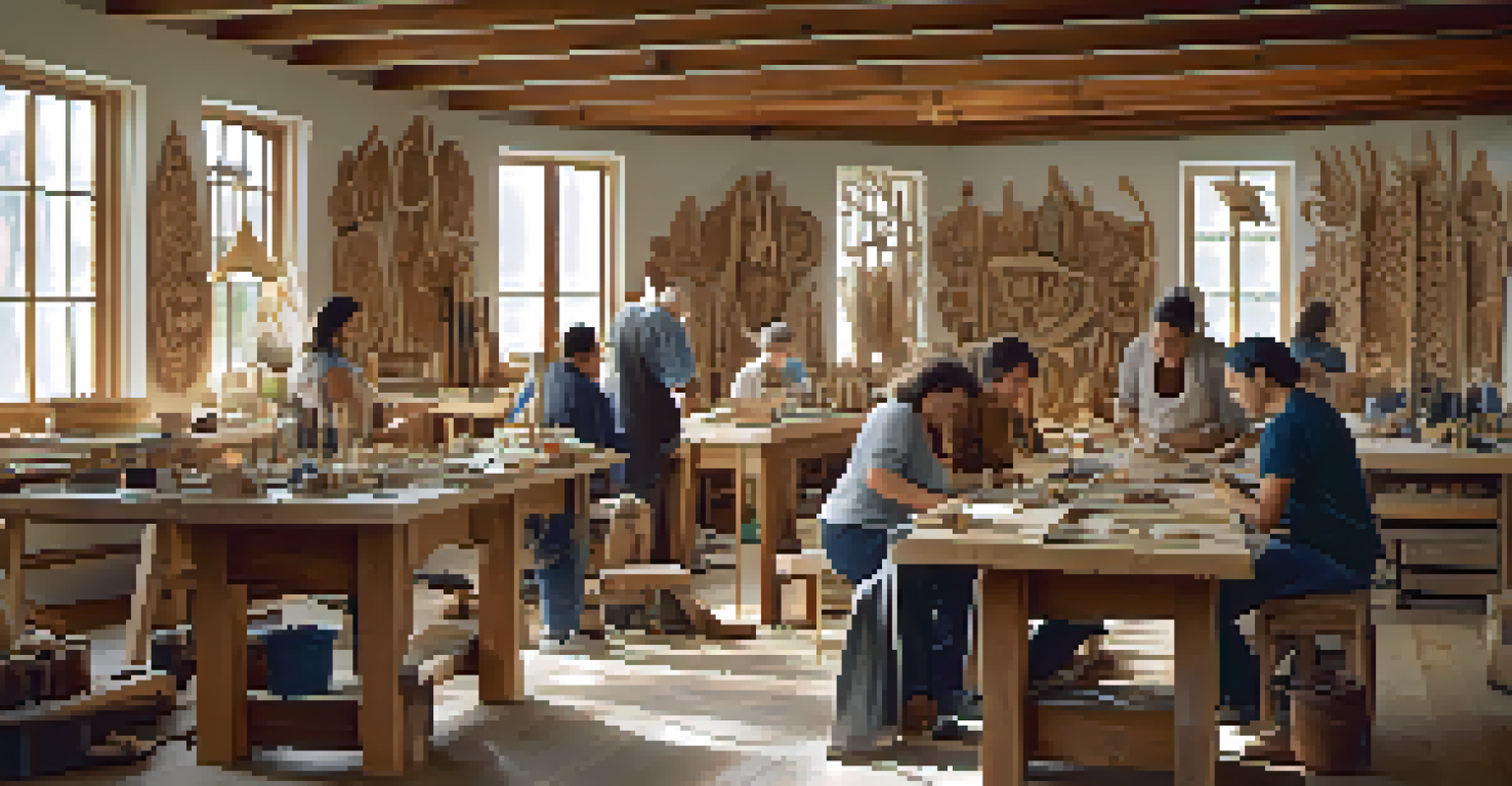The Lifecycle Assessment of Carving Materials

What is Lifecycle Assessment (LCA) in Carving Materials?
Lifecycle Assessment (LCA) is a systematic method for evaluating the environmental impact of a product throughout its life. For carving materials, this involves examining every stage from raw material extraction to disposal. It helps artists and manufacturers understand how their choices affect the planet.
Sustainability is not just a trend; it's a responsibility we owe to future generations.
LCA considers multiple factors, including energy consumption, resource depletion, and emissions. By analyzing these elements, it reveals the hidden costs of materials we often take for granted. For instance, the environmental burden of sourcing wood versus synthetic alternatives can be significant.
Ultimately, LCA serves as a tool for making informed decisions. Whether you're a sculptor or a hobbyist, understanding LCA can guide you towards more sustainable carving practices, ensuring your art doesn't come at the expense of the environment.
Stages of the Lifecycle Assessment Process
The LCA process typically involves four key stages: goal and scope definition, inventory analysis, impact assessment, and interpretation. In the first stage, you determine what you want to achieve with the assessment and the boundaries of the study. This could range from comparing different carving materials to assessing a single type in depth.

Next comes inventory analysis, where you collect data on the materials used, energy consumed, and emissions produced at each stage. This phase is crucial as it provides the raw data needed for the impact assessment. For example, a wood carving might require logging, transportation, and finishing processes, all of which contribute to its carbon footprint.
Understanding Lifecycle Assessment
Lifecycle Assessment (LCA) evaluates the environmental impacts of carving materials from extraction to disposal.
The final stages involve assessing the potential environmental impacts and interpreting the results. Here, you can identify opportunities for improvement, such as switching to sustainably sourced wood or exploring eco-friendly alternatives like bamboo. This holistic view allows artists and manufacturers to minimize negative impacts while maximizing artistry.
Environmental Impact of Common Carving Materials
Different carving materials have varying environmental impacts, making it essential to analyze each one. For instance, traditional wood carving can lead to deforestation if not sourced sustainably. In contrast, materials like recycled plastics may have a lower impact during their lifecycle but can pose challenges in terms of performance and aesthetic appeal.
The greatest threat to our planet is the belief that someone else will save it.
In addition to wood and plastic, stone materials also come with their own set of environmental considerations. Quarrying stone can be energy-intensive and disrupt local ecosystems. However, once quarried, stone has a long lifecycle and can often be reused or recycled, balancing its initial impact with longevity.
By understanding the environmental implications of each material, artists can make more sustainable choices. Opting for materials with lower overall impacts, such as reclaimed wood or sustainably sourced options, can help reduce the ecological footprint of carving practices.
The Role of Sustainable Sourcing in LCA
Sustainable sourcing is a critical component of Lifecycle Assessment, particularly in the context of carving materials. It refers to obtaining materials in a way that meets current needs without compromising future generations. This can involve practices like reforestation, responsible logging, and utilizing certified materials.
For example, choosing wood that comes from a Forest Stewardship Council (FSC) certified source ensures that the trees are harvested sustainably. This not only helps preserve forests but also supports biodiversity and local communities. The impact of such choices can significantly alter the outcome of an LCA.
Sustainable Sourcing Matters
Opting for sustainably sourced materials can significantly enhance the ecological integrity of carving practices.
Incorporating sustainable sourcing into your carving practice not only benefits the environment but can also enhance your artistic integrity. It sends a powerful message about your commitment to responsible artistry, connecting your work to a broader narrative of environmental stewardship.
Innovative Alternatives in Carving Materials
As the demand for sustainable practices grows, innovative alternatives to traditional carving materials are emerging. These materials often prioritize environmental responsibility without sacrificing quality or aesthetic appeal. For instance, bamboo, a rapidly renewable resource, has gained popularity among artists for its versatility and sustainability.
Another exciting development is the use of biodegradable composites made from natural fibers and resins. These materials can mimic the appearance of traditional carving materials while being more environmentally friendly. They provide an excellent option for artists looking to reduce their ecological footprint.
Exploring these innovative alternatives not only enhances creativity but also aligns with a more sustainable future. By choosing materials that have a lower environmental impact, artists can carve a path toward a more eco-conscious art world.
The Importance of Consumer Awareness in LCA
Consumer awareness plays a vital role in the Lifecycle Assessment of carving materials. When artists and buyers understand the environmental implications of their choices, they can drive demand for more sustainable options. This, in turn, encourages manufacturers to prioritize eco-friendly practices and materials.
For instance, if more consumers ask for sustainably sourced wood or alternative materials, suppliers will be more likely to adjust their offerings. This shift in consumer behavior can lead to a broader industry change, promoting sustainability as a standard rather than an exception.
Innovative Materials for the Future
Emerging alternatives like bamboo and biodegradable composites are paving the way for more sustainable carving options.
Raising awareness about LCA among artists and consumers alike fosters a culture of responsibility. By making informed decisions, everyone involved in the carving process can contribute to a healthier planet, ensuring that art and nature can coexist harmoniously.
Future Trends in Carving Materials and LCA
As we move forward, the trends in carving materials and their Lifecycle Assessments are likely to evolve. One key trend is the increasing use of digital tools and technologies in the design and production processes. These innovations not only streamline workflows but can also lead to more efficient material use, reducing waste.
Another trend is the growing focus on circular economy principles, where materials are reused, recycled, or repurposed rather than discarded. This shift encourages a more responsible approach to material selection and usage, significantly influencing LCA outcomes. For artists, this might mean incorporating pre-owned materials or designing pieces that can be easily disassembled and recycled.

Ultimately, the future of carving materials and their assessment will lean heavily on sustainability and innovation. By embracing these trends, artists can play a pivotal role in shaping a more eco-friendly landscape for the art world.